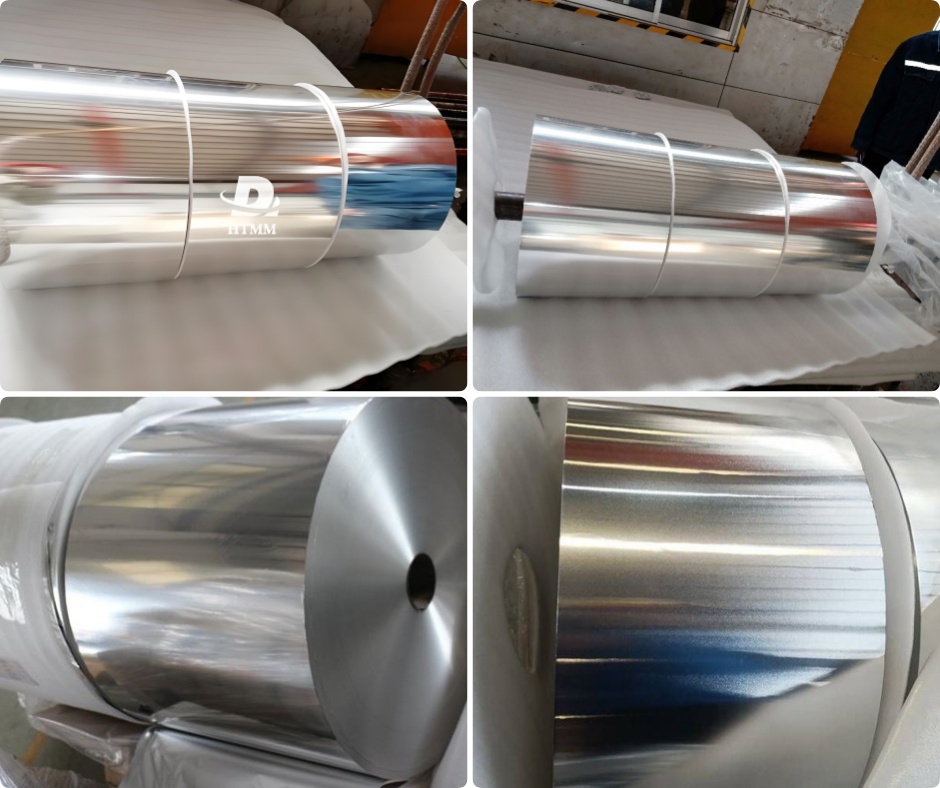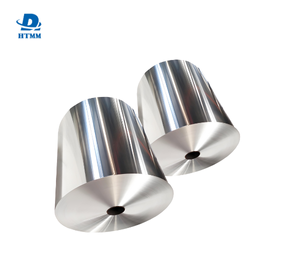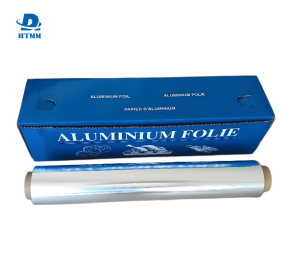All this change to consumer demand, culture, and preferences brings up the fact that the options for Food Packaging aluminium foil now come in a broad range of choices. You will find food packaging aluminium foil on the market with several different construction sizes and specifications that are suitable for a variety of food packaging methods - ranging from simple household use to complex high-line flexible packaging operations. In this article, we will discuss the types of food packaging aluminium foil, the common dimensions to know about, and how to select the correct aluminium foil thickness and aluminium foil width measures for your applications.

Common Types of Aluminium Foil Used for Food Packaging
Food packaging aluminium foil is typically classified according to its intended application, and structural characteristics. Also, types definition is based on its intended use, not quality, so when we talk about the types, we mean the main types of food packaging aluminium foil:
Household Aluminium Foil: A popular product widely used for wrapping food, covering dishes and lining baking trays in homes, restaurants and catering . The foil is lightweight flexible and easy to store.
Flexible Packaging Aluminium Foil: Flexible packaging aluminium foils are used in food packaging products such as pouches, sachets and laminated films. The foil is designed to work in conjunction with packaging products made from other substrates (e.g.: plastics paper) to create high performance packaging.
Container Aluminium Foil: Container aluminium foil is manufactured specifically for aluminium foil containers and trays, that can be used for baking, takeaway food packaging, and freezing food.
Aluminium Foil Sizes Used for Different Types of Food Packaging
The application of food packaging aluminium foil with different size is critical to providing the necessary functional performance for it application. The following illustrates the typical size range applied for two main categories of food packaging - household foil & flexible packaging aluminium foil.
Household Aluminium Foil Sizes
Household foil typically comes in rolls making it easy to use in the kitchen. The most common household foil specifications are:
Aluminum foil thickness: 10 microns (10µm) to 20 microns (20µm)
Aluminum foil width: 280 mm to 450 mm
Length: 5 meters to 300 meters (this depends on packaging to consumers or packaging for commercial purposes)
These sizes can be used for wrapping leftover foods, grilling foods, baking foods and for cover foods that are being stored or transported.
Flexible Packaging Aluminium Foil Sizes
Flexible packaging uses very thin foils as it is usually laminated with other materials:
Aluminum foil thickness: 6.35 microns (6.35µm), 7 microns (7µm), 9 microns (9µm), and/or 12 microns (12µm)
Aluminum foil width: Customizable, usually from 200 mm to 1,200 mm, depending on modern flexible packaging machines, flexible packaging film format and finish.

Flexible packaging uses foil for snack bags, dairy product pouches, coffee packaging, hot beverage and food packaging, pharmaceutical blister packs, and ready-to-eat meal packs.
How to choose the thickness and width of Aluminium Foil for Containers
When using food packaging aluminium foil in containers (trays and takeaway food boxes), the choosing of both reasonable aluminum foil thickness and width are very important decisions.
Choosing Aluminium Foil Thickness
Light-duty containers: To package light or soft foods (like bakery items or salad), using aluminium foil at 30 microns to 35 microns is generally a good thickness to use.
Medium-duty containers: For reheating cooked meals, casseroles or frozen food, a thickness of 40 - 50 micron will give a good life in terms of food applications and surface handling.
Heavy-duty containers: For grilling, bakes or larger-sized takeaway meals, a thickness of 60 - 75 micron foil will provide the strength and rigidity needed as required for high-temperature cooking applications.
Choosing Aluminum Foil Width
The width of the aluminum foil is determined by the size of the container at the time of production. Usual widths include:
290 mm to 450 mm: For small to medium-sized containers
450 mm to 600 mm or wider: For large catering trays or industrial applications
The width selected can help to maximize production efficiencies and minimize food packaging aluminium foil waste.
The food packaging aluminium foil market has a tremendous variety of options to suit different packaging needs. A very good understanding of the properties of food packaging aluminium foil with different size as well as the correct aluminium foil thickness and aluminium foil width for each application will help businesses and consumers ensure optimum packaging performance and food safety.





